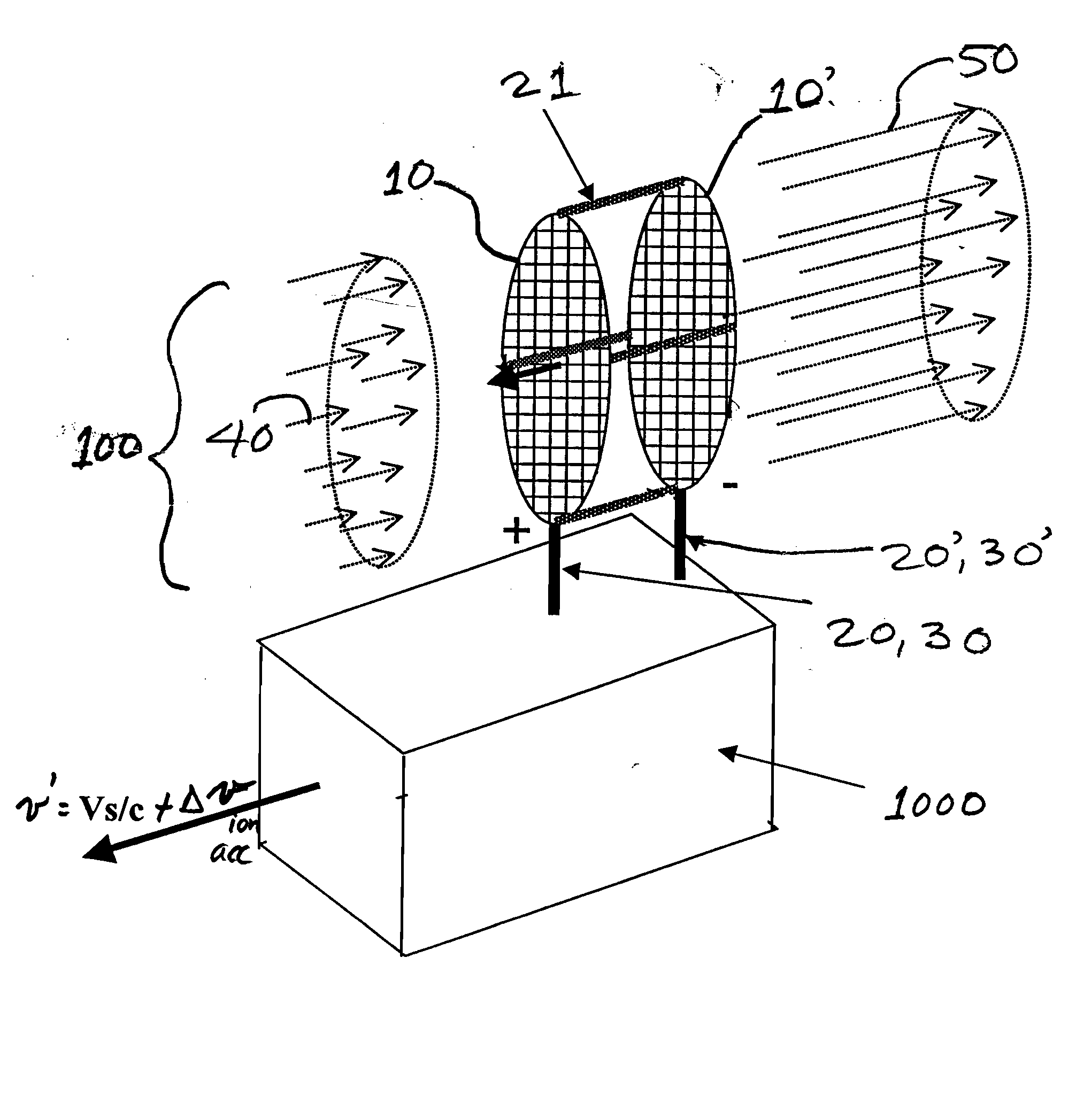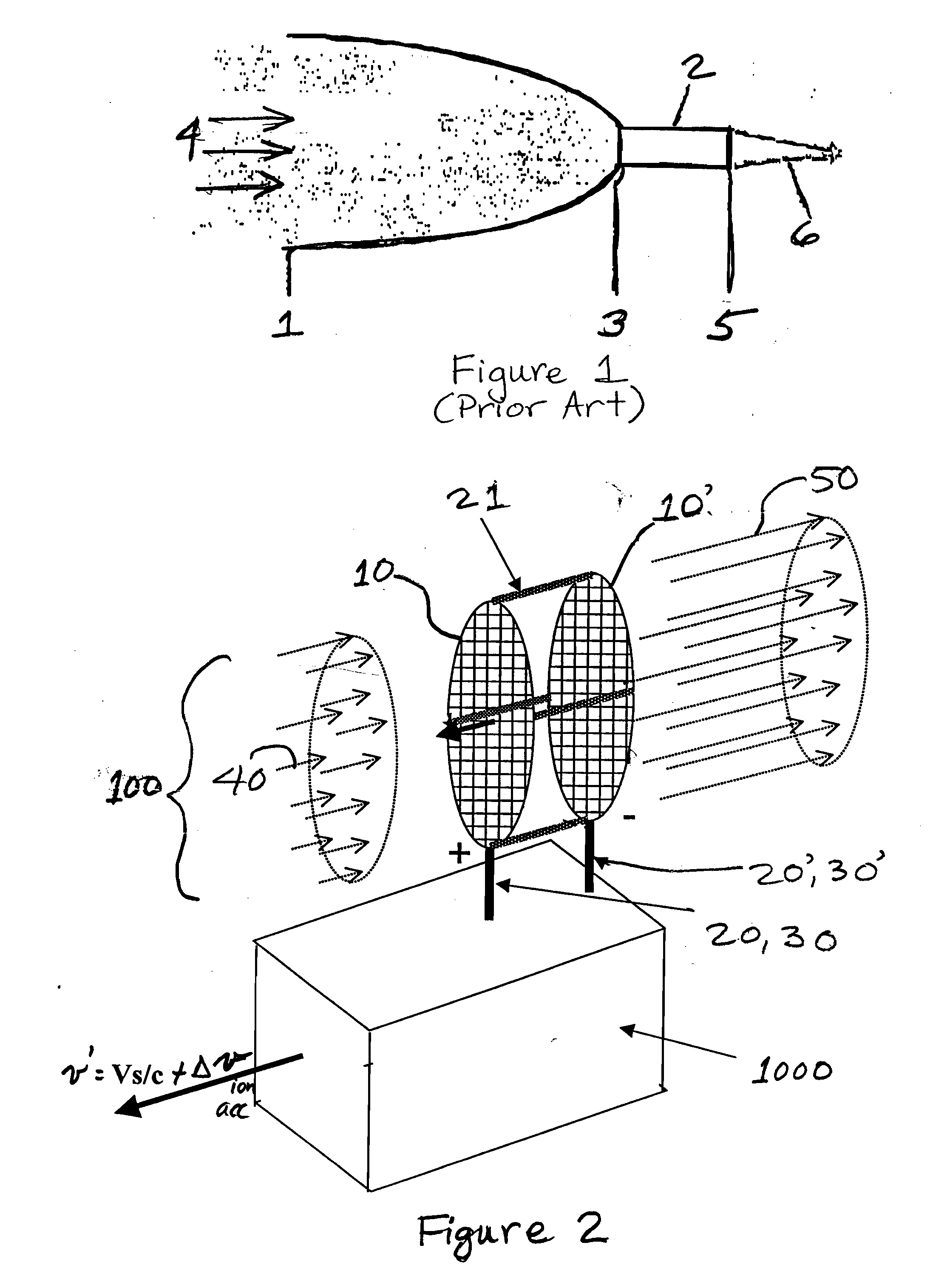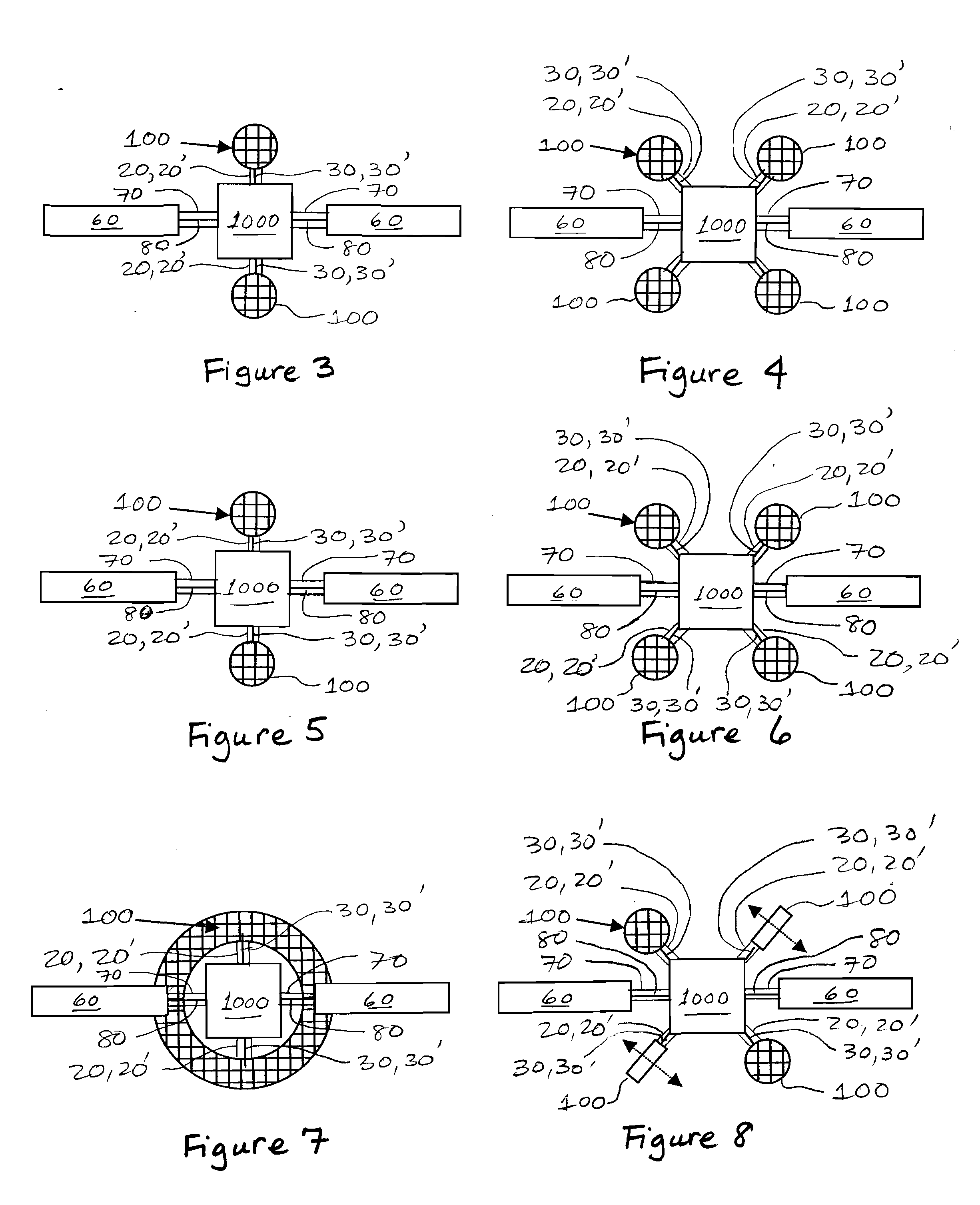System and Method for an Ambient Atmosphere Ion Thruster
a technology of ambient atmosphere and thruster, which is applied in the direction of cosmonautic vehicles, machines/engines, transportation and packaging, etc., can solve the problems of affecting the life of satellites, affecting the safety of passengers, and unable to be refueled feasibly, so as to reduce or eliminate the use of on-board propellants, reduce the cost, and achieve significant performance, reliability and safety benefits.
- Summary
- Abstract
- Description
- Claims
- Application Information
AI Technical Summary
Benefits of technology
Problems solved by technology
Method used
Image
Examples
first embodiment
[0018]FIG. 2 is a perspective view of at least one ambient atmosphere ion thruster comprising at least one pair of permeable electrical members, the at least one thruster being mounted to a craft by at least one insulating support structure having at least one electrical feed (conduit), and ambient atmosphere constituents being intercepted by the at least one pair of permeable electrical members comprising an intake mass flux, and a reaction force being experienced by the craft from accelerated ions comprising an exhaust mass flux, in accordance with the present invention.
second embodiment
[0019]FIG. 3 is a rear view taken along a velocity vector of two ambient atmosphere ion thrusters, fixedly mounted to opposing sides of a craft for boost, deboost, and attitude control along a single axis, in accordance with the present invention, with typical craft appendages, such as a solar array or radio frequency (RF) antenna being shown for reference only.
third embodiment
[0020]FIG. 4 is a rear view taken along a velocity vector of four ambient atmosphere ion thrusters, fixedly mounted to opposing vertices of a craft for boost, deboost, and attitude control along two axes, in accordance with the present invention, with typical craft appendages, such as a solar array or radio frequency (RF) antenna being shown for reference only.
PUM
 Login to View More
Login to View More Abstract
Description
Claims
Application Information
 Login to View More
Login to View More - R&D
- Intellectual Property
- Life Sciences
- Materials
- Tech Scout
- Unparalleled Data Quality
- Higher Quality Content
- 60% Fewer Hallucinations
Browse by: Latest US Patents, China's latest patents, Technical Efficacy Thesaurus, Application Domain, Technology Topic, Popular Technical Reports.
© 2025 PatSnap. All rights reserved.Legal|Privacy policy|Modern Slavery Act Transparency Statement|Sitemap|About US| Contact US: help@patsnap.com



